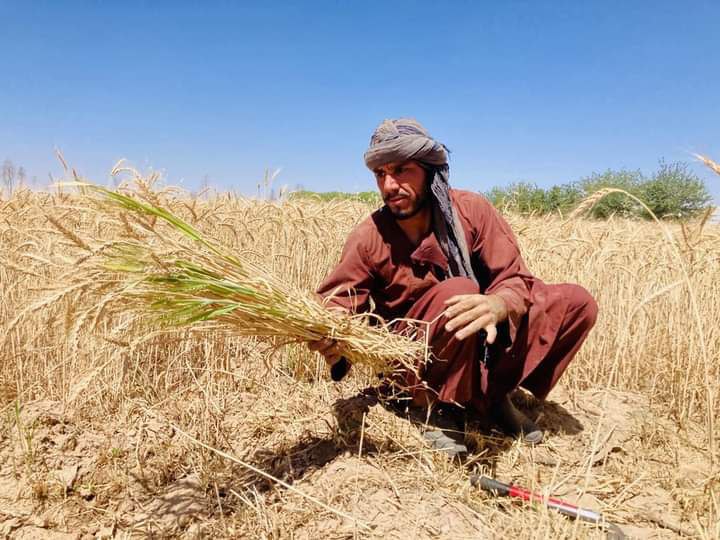RASC News Agency: Farmers in Ghazni have voiced grave concerns over the spread of a devastating agricultural pest known as “Surkhi” (red rot) across their wheat fields. This pest has reportedly led to a severe reduction in wheat yields. The affected farmers report substantial financial losses due to this infestation. Despite numerous appeals to the Taliban-controlled Directorate of Agriculture and Livestock in the province, as well as other relevant organizations, no assistance has been provided to mitigate the spread of this blight.
According to the farmers, promises of help from the Directorate have proven to be empty words. The “Surkhi” pest has drastically diminished both the quality and quantity of wheat yields in the region, with a reduction of up to 50% compared to previous years. Mir Ahmad, a farmer from Ghazni who has cultivated several acres of wheat, reports that his fields have been significantly affected. “Over the past two months, I’ve approached the Taliban-led Directorate of Agriculture multiple times, but no aid has been forthcoming,” he said.
He added, “All our wheat crops have been afflicted by the disease called ‘Surkhi.’ No one has provided us with the necessary pesticides or guidance on how to combat it. From the start of the month of April until just recently, I’ve visited the Directorate multiple times. They assured us that they would supply the needed pesticides through various organizations, but as I harvest my wheat, I have yet to see any such support.”
Another farmer from Ghazni noted that the “Surkhi” pest has reduced wheat yields by as much as 50% and compromised the quality of the harvest. The pest causes the wheat heads to become stunted and empty, significantly reducing both the weight and quality of the grain. He explained, “The ‘Surkhi’ disease causes the wheat heads to shrivel and empty out, reducing the weight. When we mill the wheat, it turns out to be of very low quality and is not suitable for cooking on its own. Where we should have harvested 100 ser (an Afghanistan unit of weight) of wheat, we’re now only getting half.”
The farmers stress that due to insufficient income from their crops, they cannot afford the necessary pesticides to protect their fields. They attribute the reduced yields to the lack of response from the Taliban-controlled Directorate of Agriculture and the absence of coordination with collaborating agricultural organizations. Agricultural experts point to climate change and unseasonal snowfall and rainfall as key factors in the emergence of such pests. They emphasize the need for ongoing education for farmers and the timely distribution of necessary pesticides.
The infestation comes amidst reports that 70% of Ghazni’s residents are engaged in farming and rely on it for their livelihood. This report of a 50% reduction in wheat yields follows an earlier statement from the World Food Programme (WFP), which indicated that wheat yields in Afghanistan had decreased by 30 to 35% last year. The WFP attributed this decline to prolonged droughts, locust infestations, and the spread of plant diseases, identifying these as major contributors to the reduction in wheat yields across Afghanistan.






